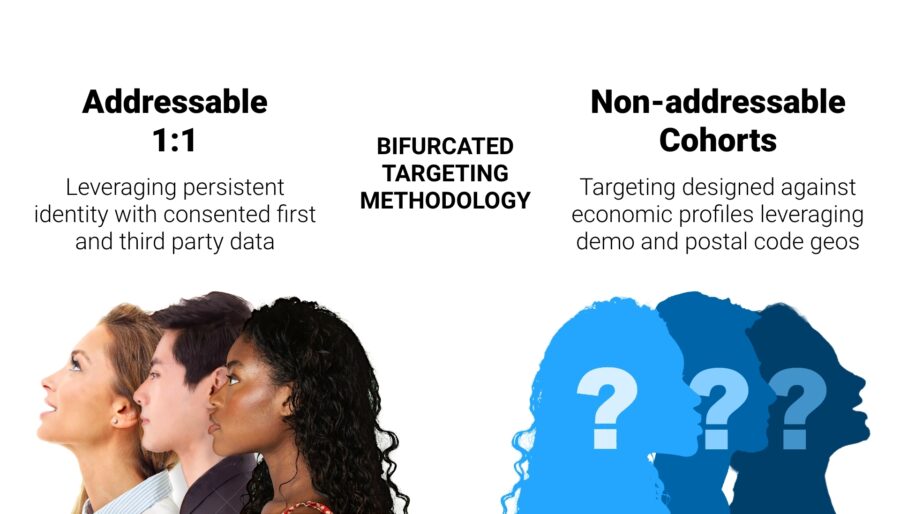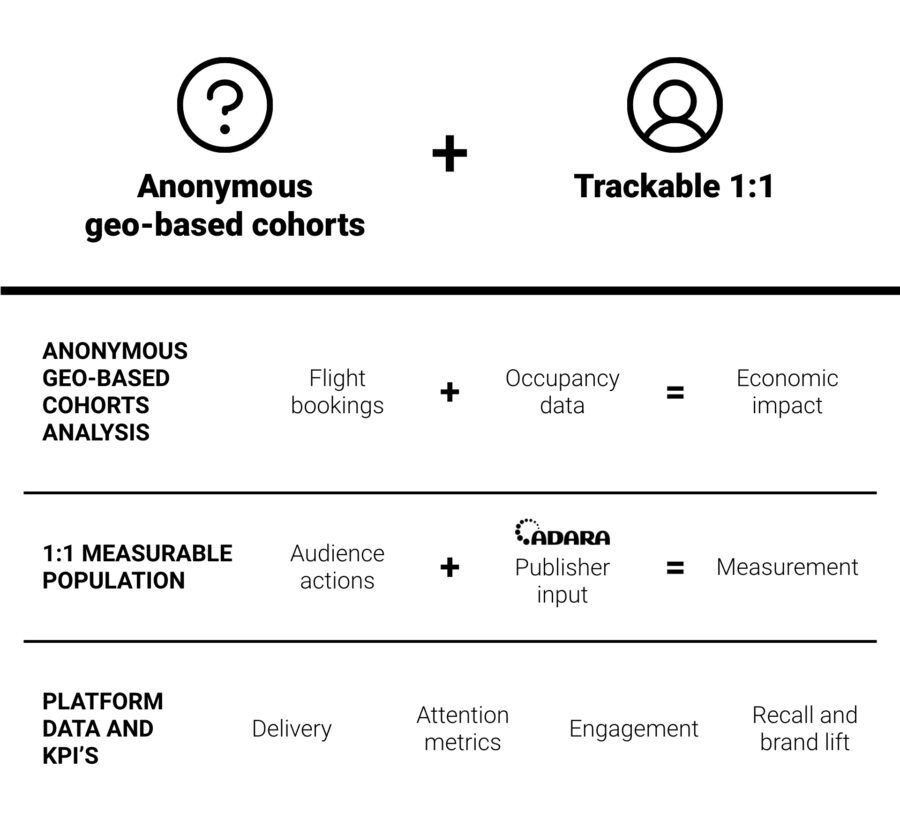How to implement an anonymous media strategy in a signal challenged world.
The marketing landscape is undergoing a seismic shift with signal loss and increased privacy regulations. In this article, our Chief Digital Officer, Sarah Caputo, shares how Destination Marketing Organizations (DMOs) can adapt their targeting, attribution and measurement efforts to drive efficiency & greater return in an addressable strained world.
– – –
Let’s start at the beginning – enter our cookie addiction.
Cookies, originally created to allow e-commerce shoppers the ability to store items in a virtual shopping cart, were first introduced in 1994. With this introduction, came the ability for marketers to display ads based on a user’s browsing history.
From there, advertisers were hooked and, as time evolved, many additional use cases were made using these 1:1 signals. Marketers had more control than ever over targeting, suppressions, personalization, frequency management, optimizations and downstream measurement & attribution.
However, beginning in 2011, consumers started to sour on this data compromise. Concerns around gaining consent began and privacy killed the ad industry’s sugar high.
By 2018, regulatory efforts such as The European Union’s General Data Protection Regulation (GDPR) and the California Consumer Protection Act (CCPA) now classified cookies, User IDs, IP addresses and other signals as personal data. In most jurisdictions, consent has become a requirement before consumer web behaviors can be tracked.
In 2021, Apple doubled down on privacy, introducing new iPhone features that restricted app access to personal data, removed tracking pixels, and limited the ability to track a user’s location.
Beginning in 2024, the last of the cookie era will crumble as Chrome will no longer support 3rd party cookies.
Evolving to our new reality with anonymous cohort-based targeting
Opportunities to target and measure addressable audiences 1:1 continue to shrink and costs to access them only rise. With the death of the cookie and other signals at hand, how can you expect to maximize limited resources when you’re losing the ability to target and measure the majority of the population?
As we return to a world where the majority of our audience is “anonymous”, destination marketers need to evolve their targeting and embrace hyper-local cohorts to ensure investment efficiency and to achieve as clear a perspective of attribution as possible.
Hyper-local cohorts drive efficiency and impact.

Our approach doesn’t leave 1:1 behind, but instead shifts priority toward reaching the growing “anonymous” population. Utilizing demographics and economic factors, we work to define audience “cohorts” who mirror target market make-up, align to your lodging tiers, and represent a higher propensity to travel and spend on leisure activities.
By aligning postal code level targeting to each cohort, we can remove reliance on signals to build a targeting model for this population.
This dramatically changes how we view targeting a designated market area (DMA). Take Chicago. Leveraging this approach, we can look at its 87 postal codes and align them with cohorts that over-index on characteristics like age, household size, income, and other key factors, to then target. Not only are we now not diluting investment across the entire city, but we can also gain back control of messaging to better ensure relevance. Lastly, this approach also sets us up to better measure performance. Since cohort investments can be aligned to lodging outcomes, we gain another layer of impact when we map these together.
A layered approach to measurement.
Our approach toward redefining targeting helps provide a structure to unlock new audiences, achieve greater reach and drive economic impact. And with efforts distributed at the macro level, a layered approach can be employed to measure across addressable and non-addressable efforts for a more complete picture of performance.
Conclusion
With the degradation of persistent signals in a fragmented marketing ecosystem, you can no longer solely rely on 3rd party data for consumer targeting, nor an accurate picture of performance. While one-to-one targeting isn’t going away, it should be viewed as supplemental.
This approach helps unlock new audiences, achieve greater reach and drive economic impact. Industries from insurance to automotive are already leveraging anonymous audiences for more logical targeting & attribution…and now, DMOs can maximize their return as well.
Interested in learning more about how we’re helping destinations evolve their paid media strategies? Let’s chat.














